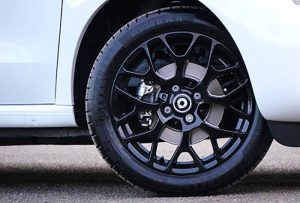How do you know when your tyres need replacing?
For many drivers, the answer is ‘when the garage tells me they do’. And that’s fine if you make regular trips to a tyre specialist or garage. But for most of us, the only time the car visits a garage is when something’s gone wrong or it’s MOT and/or service time.
When you think about it, that is a pretty dangerous approach to driving. We all know the dangers of worn tyres, yet we wait until our next MOT or service to check that they are still safe to drive on. That’s a gamble that we just shouldn’t be taking.
Sometimes, without even looking at the tyres, there are clues that your tyres are on the way out. In this blog post, we’ll mention four to watch out for. In our next post (coming soon!), we’ll look at inspecting the tyres themselves.
1. Your tyres are making strange noises
It’s easy to get paranoid over every single noise that your car makes, but nevertheless, tyres that are making unusual noises could be telling you that something is wrong. Whining or squeaking noises could well be your brakes, but there is also a possibility that your tyres have become misaligned, which will lead to uneven wear and damage. If the noises persist, it’s best to get them checked out by a professional.
2. You can feel vibration through the car steering wheel
If you’re noticing more vibration in the steering wheel than you’re used to, and it’s happening even on good road surfaces, there might be a problem with your tyres.
Although there are plenty of reasons for increased vibration (including worn shock absorbers, misaligned tyres or even your imagination!), one possibility is that there is damage to the tyres’ internal structure. And even if the vibration isn’t down to tyre wear, it is still worth investigating. The vibration may indicate another problem that will soon damage your tyres. The bottom line is that vibration is never a good thing, and needs investigating by an expert.
3. Your car starts performing differently in wet conditions or when braking
When tyres lose a proportion of their tread, they become less effective at removing water sitting underneath the tyre’s contact patch. This makes them less effective at doing their job in wet conditions. If your car isn’t cornering or braking so well as it used to, especially in wet conditions, this may be a sign that the tyre has deteriorated.
Just to muddy the issue, a tyre that’s worn may also show no signs of decreased performance in dry conditions. As the tread wears, the amount of rubber in contact with the road increases, and whilst that’s bad news in the wet, grip can sometimes increase in the dry.
The short message: watch out for changes in car performance, but don’t rely on these as a sign of tyre wear.
4. Your tyres are getting old
The final non-visual sign that your tyres need replacing comes from checking your records. You do keep records of when your tyres were changed, right?
We’re used to thinking about replacing tyres after a certain amount of wear. What’s less obvious is that tyres deteriorate with age regardless of how much they’ve been used. Exposure to UV light, heat and just plain old air will gradually perish the rubber, which can lead to tyre failure.
Tyre failure from age rather than use is often seen in caravan tyres or mobile homes, where the problem is exacerbated by long periods spent with the tyre static and in the same position.
How often should you replace tyres? Failure rates in caravan tyres increase drastically after five years, so regardless of mileage, it might be wise to consider changing around that time, especially if the tyre is showing any of the other signs of deterioration mentioned above.
What to do next
If any of the above apply to you, the next stage is to do a visual inspection for signs of tyre wear and damage. We’ll cover this in our next post. Alternatively, if you’re in South Oxfordshire, get in touch with BK Tyres and our friendly professionals will be glad to advise.

